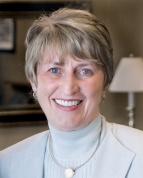Ball State University (BSU) receivesSecond Nature’s 1st Annual Climate Leadership Award for Institutional Excellence in Climate Leadership. Award recipients were recognized at the 4th Annual American College & University Presidents’ Climate Commitment (ACUPCC) Summit in Denver, CO on October 12th
 Ball State University President, Dr. Jo Ann Gora, is one of the twelve founding members of the ACUPCC Leadership Circle. BSU is in the midst of installing a geothermal‐based district system. When complete, it will eliminate the annual burning of 36,000 tons of coal, reducing yearly CO2e emissions by 85,000 tons and saving $2 million in net fuel costs per year.
Ball State University President, Dr. Jo Ann Gora, is one of the twelve founding members of the ACUPCC Leadership Circle. BSU is in the midst of installing a geothermal‐based district system. When complete, it will eliminate the annual burning of 36,000 tons of coal, reducing yearly CO2e emissions by 85,000 tons and saving $2 million in net fuel costs per year.


